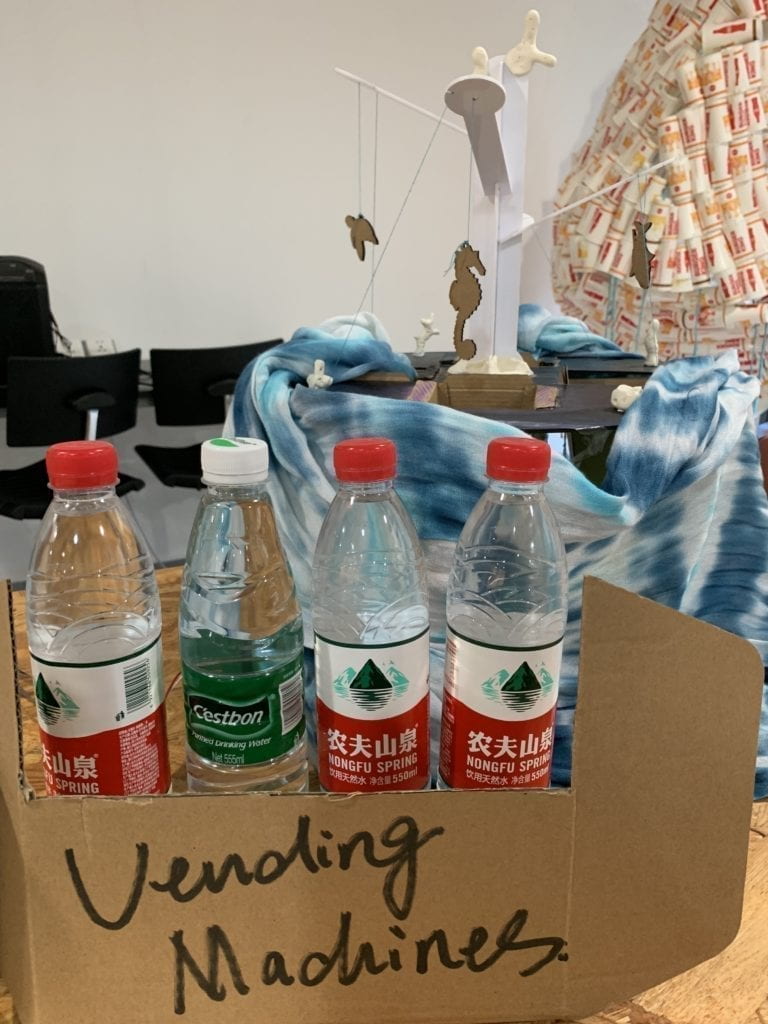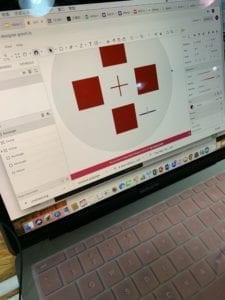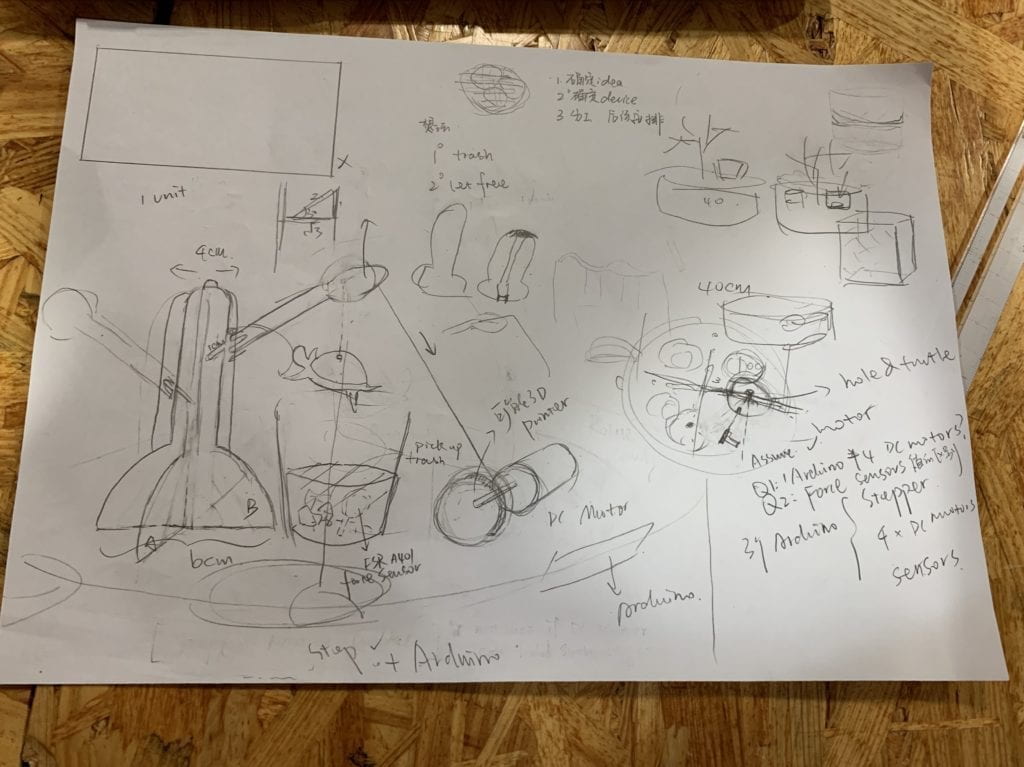
CONTEXT AND SIGNIFICANCE
No matter in our group project (the Watch Alpha) or other presentations I have seen, what is clear is that most devices are customer-centered. It means each individual gets a unique experience when they use the device and that specificity to some extent is what really features interaction. Because if all people receives similar replies, then probably the device is only performing certain encoded reaction instead of having actual interaction. As have been seen in works done by our previous classmates, the reason some of the games they created is welcomed, especially for group games, is the fact that their interaction with the device also involves the experience of interacting with other players which makes a unique interaction every time they play. Interaction is more than simple reaction to someone’s acts but should have meaning or at least practical uses. The works shown on wildlife interactive media exhibition (see videos below) though not showing a wide range of different responses, still creates great interaction and provides good feedback because the fact that people never know what might happen or show up before they see the response and there are more than one possible responses. so for each individual experiencing it, the experience is still personal and unique. Our projects takes the idea of these wildlife interactive media arts and transform it into sea animal protection. We also make plastic use which is everyday encounters as the trigger to make people feel more obliged to have practical changes. The primary idea is to create a saving act like what those wildlife arts do to create “prizing” conditioning but because of practical reasons we finally did the “killing” process to form “punishing” conditioning. The target is normal people but more suitable for younger students/children as the interaction is simple and easy for them to understand with vivid lovely sea animals while it is most suitable for these young people to realize the urgent need to protect sea animals as they are more willing to change their behaviors and they have strong influence to people around them.
CONCEPTION AND DESIGN:
Our plan was to have the users using model trash throwing into the supposed bins inserted in the sea and see how the sea animals’s life status will be. So the device is designed to have two parts, the sea animal condition one (reacting part) and the trash sensing one (triggering part). Therefore the consequence of their behavior is very clear and obvious. DC motors with H-bridge to change directions are chosen to control the sea animals so they can present different status. Those sea animals are tied on a white acrylic tree-like model with clay decorations suggesting coral reef which makes the animals higher and more visible within context to help users understand. Because of practical reasons and the feedback from user test we give up the ideas of letting users throwing model trash into bins since users get confused how they can interact when they have model trash. So we created the user-friendly vending machine with cardboard which makes it much clearer for users what they can do. Users can take any bottle in the machine to see what happens. And the bouncing (alive) v.s. still (dead) acts as feedback. But if the device have a larger size and if we have more time to learn the coding, it might still be a good idea to use trash throwing as trigger. By using force sensor or weight sensor to record the realtime accumulated weight of different type of model trash (with specific weight add to it according to the type it represents) which have been thrown into the boxes and showing animal’s status at certain weights for me is still a idea showing better interaction because people can try different composition of trash and have more personal experience. Within my understanding and previous study of interaction I still assume people regard more personal experiences with the device as more interactive because it suggests what the user has done contributes more to the result and this sense of self-value also makes users to contribute more to the interaction.
FABRICATION AND PRODUCTION:
Because we are trying to keep people aware of sea animal protection so a small sea-life environment modeling needs to be created so that users get the interactive visual image. This parts need more fabrication while the trash sensor has more to do with circuit building. We have encounter a lot of failures while trying to use the 3D-printer and the laser cut. Problems with the laser cut are mainly due to the deviation in size where the machines cuts more on edges and makes pieces cannot be tightly connected to each other. But this problem can easily be fixed through changing length or size.

The major failure in our production is the bearings made with 3D printer. The tiny size is a possible contributor the the failure but the fact that none of the holes are hollow does disappointed us and though we try to use drill to fix the problem, it does not work quite well and we have to give up using those bearings and directly tie strings to motors which leads to relatively unstable interaction because of intertwining strings. Apart from the fabrication problems, circuit building seems to go pretty well. In the user test we realize that the rotation speed of the motors even without plugging to 12v is too fast and that the sensors are not responding well in the box causing bad interaction because of delays and not perceivable responses. We fix the problem by changing to slower motors and take out those sensors and have a separate outside sensing space (as talked about in the designing part). Water are also added to plastic bottle props to weigh more, helping sensors function better.


CONCLUSIONS:
The goal of our project is to raise public awareness of how plastic use and pollution harms sea animals by having the interactive device showing some bad results. Our project aligns with my definition that it does show responsive results when detecting different acts however, for me it is not yet a good interaction because the responses are limited and need to restart to function every time one loop ends. So if i have more time, I will still tend to change back to the trash throwing and weighing idea as I think it is more thought-provoking, interesting and having more creative individual experience for users and in this sense more interactive. Currently, the project’s interaction is more responsive than interactive although it succeeds in letting users figure out how to interact and getting the thoughts we are promoting from their interaction with the device. The whole producing process, user tests and Q & A in final presentation help me think more from the user’s standpoint and try to make the “less plastic pollution = saving sea animals” ideology more explicit for users. I learned to have indications about the project’s main focus and implicit guidance (e.g. coral decorations indicating the whole platform to be ocean, vending machine sign suggesting that taking bottles away means usage). These indications and implicit guidances are a lot better than having nothing at all which confuses users or having step-by-step instructions which ruins the whole interaction process. Getting those hints, having personal comprehension and using this interpretation to interact makes user more involved in the whole interaction process and thus have more take-aways.
Environment and animal protection is a globally-valued urgent issue. Having an educational interactive device helps visualizing and animating possible consequence of our casual daily acts and arouses awareness. Since it targets more on teenagers/children, its influence can be broad. The project broadens my knowledge in coding, circuit building and fabrication. I learn to use more components and tools during the process although a lot of trial results in failures. But failures especially bad user feedback is what helps me learn and improve. My personal understanding about interaction is deepened through this whole creating process and especially from the way users actually choose to interact with it when i find out users always have their own interpretation and creative thoughts. This is what sometimes ruins the interactive experience especially when they interpret in the converse way, but this is also the charm of interactive arts as everyone has their own experience. So that will be something I consider and take more seriously when working on my next project.
Reference:
– https://www.youtube.com/watch?v=7mvX2XYQSNk
– https://pixabay.com/vectors/shark-jaws-sea-fish-ocean-white-305004/
– https://pixabay.com/vectors/animal-fish-ocean-sea-seahorse-2027685/
– http://poofycheeks.com/2019/05/sea-turtle-svg-dxf-png/
– https://learn.adafruit.com/force-sensitive-resistor-fsr/using-an-fsr
– Class 10 – Thursday Oct 10 – DC Motor Control (Direction) / Stepper Motor Control and High Current Loads
– https://www.creativeapplications.net/python/aweigh-open-navigation-system-inspired-by-insect-eyes/